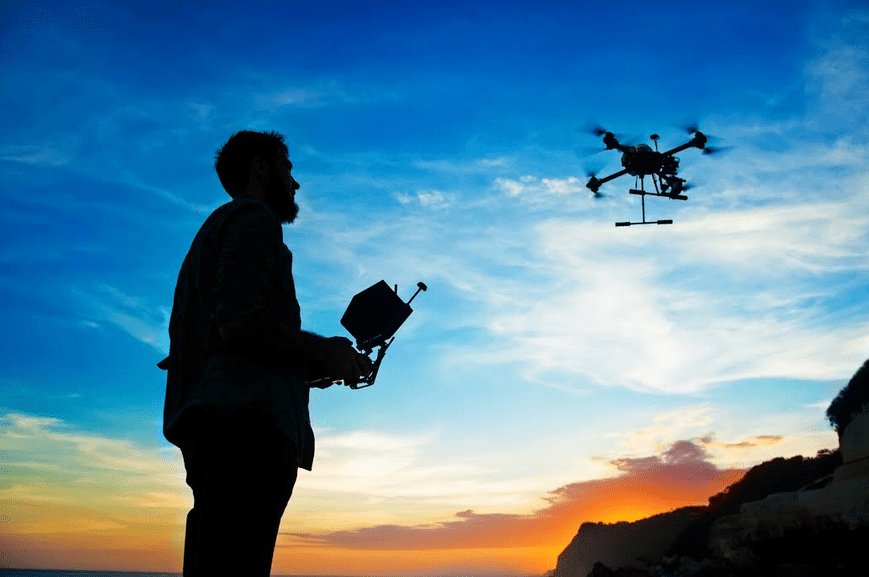FAA testing and certification for small UAS remote pilot certificates begins in earnest this month, but does that mean the commercial drone industry will see rapid growth?
QuickTake
THE FACTS: Beginning August 29, 2016, the new small UAS Rule for commercial drone operations in the U.S. takes effect. One very important change is that operators will now have to obtain a remote pilot certificate with a small UAS rating. Under the new rule—also known as Part 107—the person actually flying the drone must have this certificate, or be directly supervised by someone who has one. In advance, the FAA has published a variety of documents to assist businesses seeking to be compliant with the new regulation. You can find an article with references to those documents here.

WHAT’S COOL AND WHAT’S NOT: The new rule (and the new certification process) marks a complete shift in the way the FAA permits commercial drone operations in the National Airspace System (NAS). Under the old approach, known as Section 333 Exemption, companies or individuals could apply for an airworthiness certificate exemption and then the FAA would grant them on a case-by-case basis. Commercial operations rules also required the pilot-in-command of drone operations to have at least a sport pilot’s license. At last count (8/19/2016), 5,542 petitions had been granted. The process was intended to provide safe and legal entry into the NAS, thus discouraging illegal operations and improving safety. It was anticipated that this activity would result in significant economic benefits.
The point here is Section 333s were granted to the business operators of the aircraft–not the pilots themselves. The new rule is pretty much the opposite. It is a pilot-based certification that switches the responsibility from a business entity to a person.
THE RUB: In March 2016, the FAA released its annual Aerospace Forecast Report Fiscal Years 2016 to 2036, which cites potential sales of more than 600,000 commercial small UAS requiring registration, growing to 2.7 million by 2020. This forecast was developed in conjunction with the Teal Group Corporation. They segment the commercial market into industrial inspection, real estate / aerial photography, agriculture, insurance, and government with industrial inspection taking the bulk of the market at 42%.
But as I have written in Diversity and Hype in Commercial Drone Market Forecasts, Teal’s forecast is inflated and out of touch–as are a lot of others. We currently track 41 different forecasts. The trouble is none take into account existing market trends or the economic force that a lower barrier to entry will have on pricing of drone-based business services. To put this disconnect into perspective, one only need look at other related forecasts. For example, the revenue of photography services in United States in 2020 is expected to be about $6.7 billion. Portrait studios account for about 70% of industry revenue; commercial photography for about 30% of that. That means commercial photography is only a $2 billion market. How we get from there to PwC’s prediction that $127.3 billion of current business services and labor will be replaced by drone-powered solutions is baffling to say the least.
BOTTOM LINE: Our survey data going back to 2014 and even our most recent report tells us that the film/photo/video market is–and will probably always be–the largest commercial drone market segment. Neither Teal nor PwC forecasts account for the full potential of drones in that segment, nor do they incorporate any first-hand knowledge from those who’ve already operate in that segment. In contrast, I have heard from scores of photographers and videographers who operate their small UAS for business without regard to legality. Most never applied for a Section 333 because of the stringent pilot license requirement. Most have been waiting for this day to arrive so they can get certified and “come out of the shadows” to operate legitimately. Most will never do industrial inspections, or agriculture, or any of the other business services being predicted for commercial drones.
This article says 3,351 people have already signed up with the FAA to have their aviation knowledge tested on the first day possible. I predict most of these are either film/photo/video operators who were granted Section 333s and never had a pilot available to them or those operating in the shadows. I’m just not convinced that means big money for the industry yet. We’ll see what happens, but one thing is for sure—we’ll see a lot of very small businesses (read: photographers and videographers) now openly advertise their aerial services.
http://dronelife.com/2016/08/25/will-the-u-s-s-new-drone-pilot-certification-accelerate-commercial-growth/